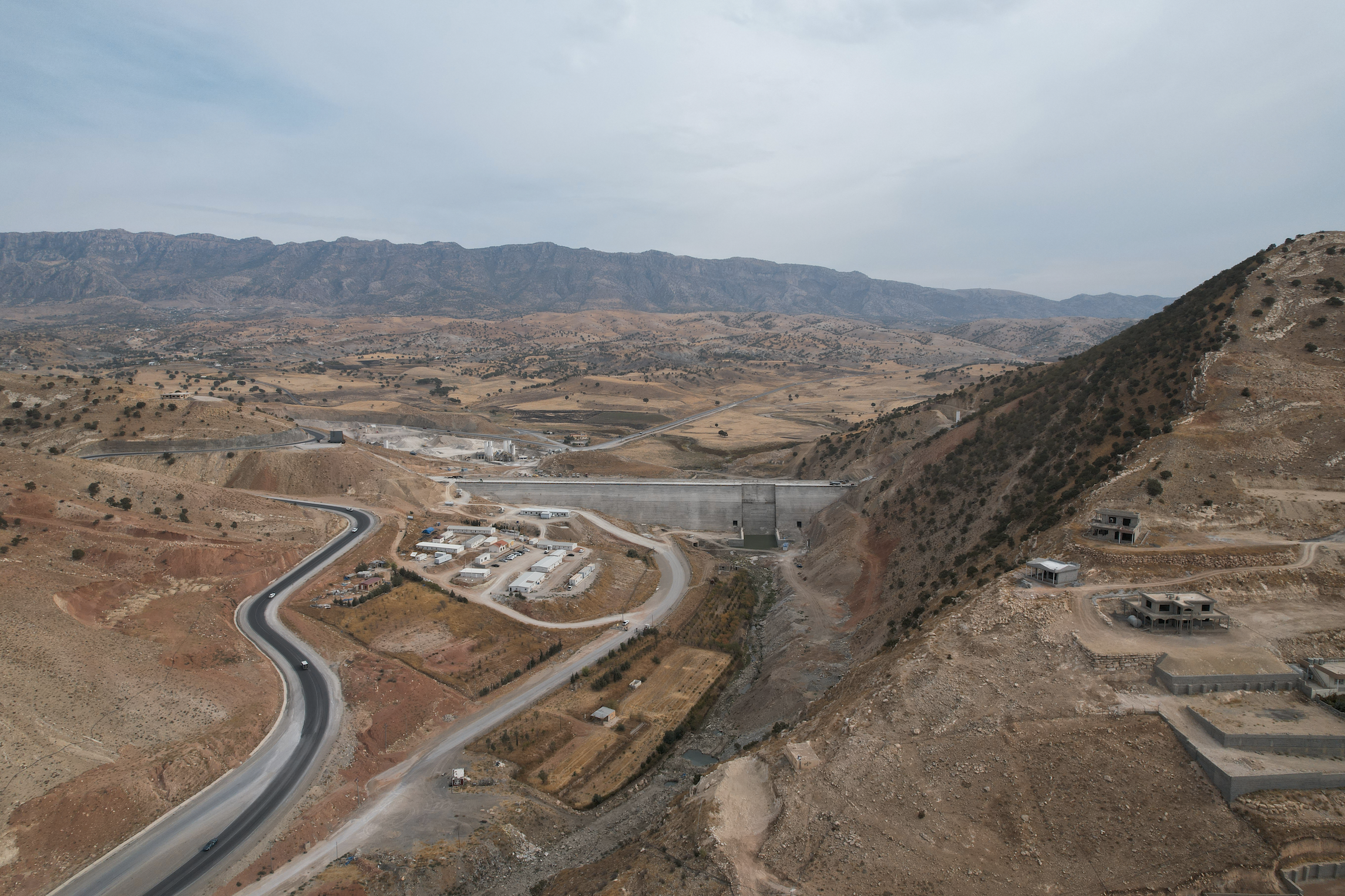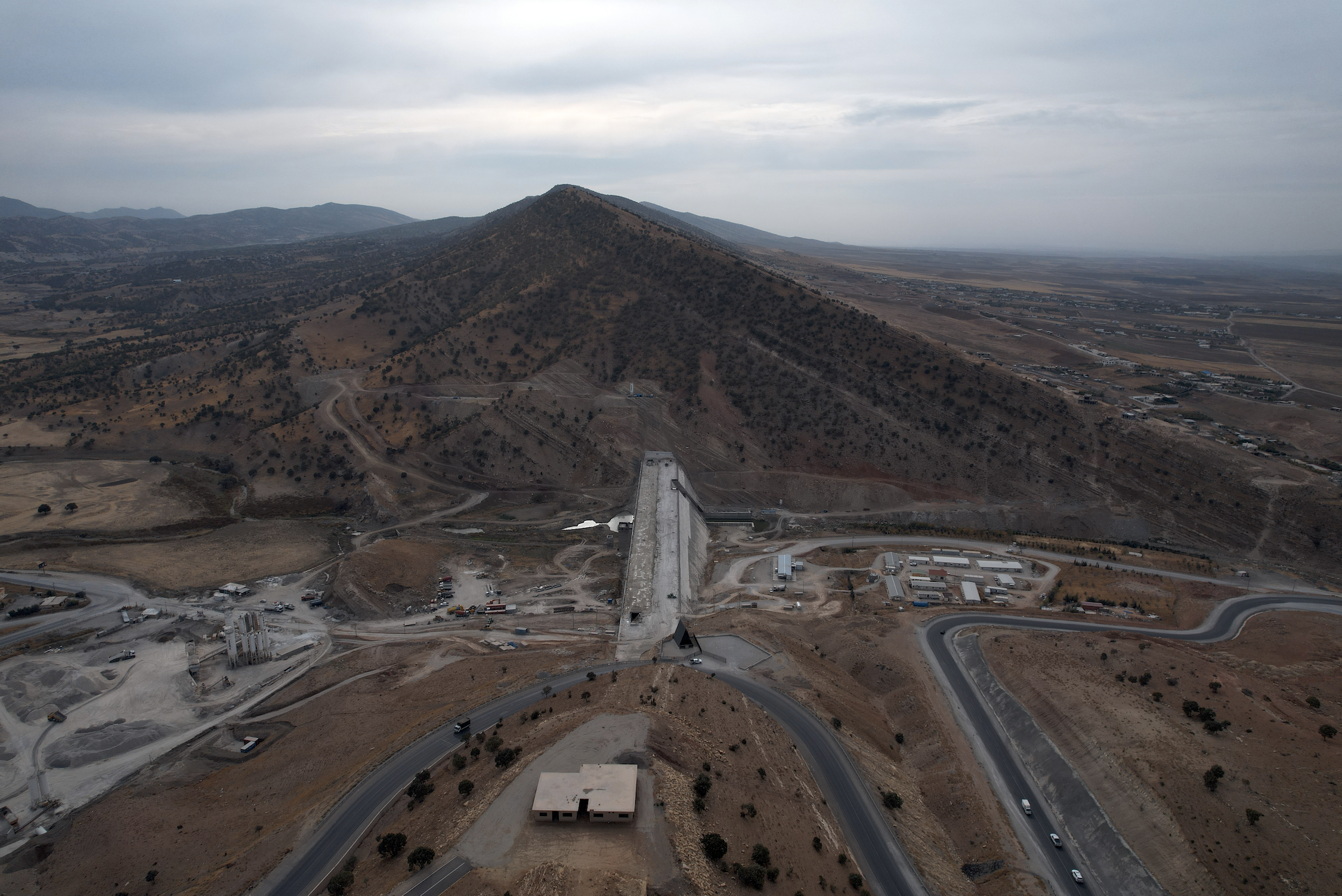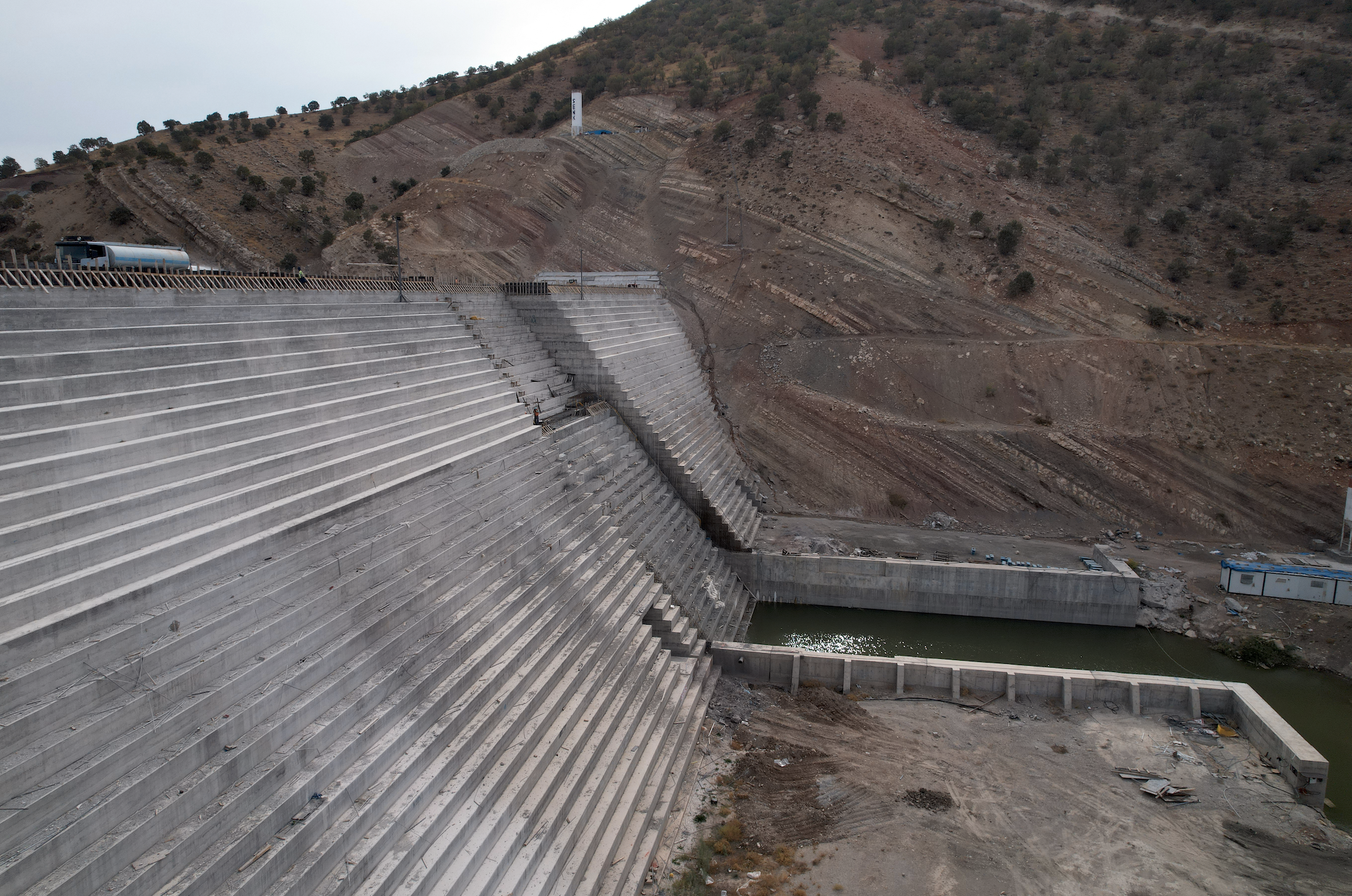Dams, those gigantic structures that hold back water and thus save human communities from flooding, are one of the most useful manmade structures in history. They not only transform arid deserts into fertile fields, but also bolster agricultural irrigation, provide a supply of potable water, generate electricity, create industrial applications, and foster tourism development.
In the Kurdistan Region of Iraq (KRI), the government has long acknowledged the challenging future ahead. As the clear and present dangers of climate change and global warming become a reality in Iraq and the Middle East, the Kurdistan Regional Government (KRG) has made a commitment to developing strategies to secure the future of its people, the foremost of which is the construction of dams and reservoirs.

This KRI is home to some of the oldest dams and aqueducts in the world. Only in the KRI can one find remnants of dams and aqueducts that were built 2,700 years ago. With those non-functional structures today serving only as treasures of history, the growing population in the KRI needs a combination of strategic planning and modern technologies to prepare for future environmental risks.
Since its inauguration in 2019, the KRG’s Ninth Cabinet has completed the construction of four dams and is currently working on 13 more across the KRI. Among the dams that are under construction is the Gomaspan Dam, which lies just outside Erbil. According to the engineers who designed it, Gomaspan Dam will become the third largest in the KRI, behind the Dukan Dam and Darbandikhan Dam.

An investment in progress
As of October 2023, the construction of the Gomaspan Dam was 60% complete, and the dam is anticipated to commence water-storage operations by mid-2024, according to Abdullah Gardi, the CEO of the construction company overseeing the project.
With a projected storage capacity of 115 million cubic meters, Gomaspan is poised to significantly transform the region. Upon completion, it will play a pivotal role in elevating underground water levels, which has been a major concern for the Kurdish policymakers in recent years. According to local authorities, the dam is set to provide steady water supplies for approximately 16,000 square meters of agricultural land, facilitating the expansion of agriculture and fish farming. This aligns with another main strategic plans of the Ninth Cabinet: boosting agriculture so that the region can diversify its economy away from oil exports.
The entire Gomaspan project involves an estimated budget of 95 billion Iraqi dinars (approximately USD 64 million). Notably, it has already generated job opportunities for 300 engineers, technicians, and construction workers. According to government officials, the KRG is proud of the fact that over 75% of the technical manpower behind the dam’s construction comes from local experts and technicians.
The construction of the dam utilizes reinforced cement concrete (RCC), a widely preferred material in the construction industry due to its exceptional durability, robustness, cost-effectiveness, and various other benefits. Gomaspan, a massive structure measuring 513.67 meters in length and towering at a height of 69.25 meters, is anticipated to annually gather a staggering volume of 47,839,000 cubic meters of water.
Additionally, there are plans to develop touristic projects in the stunning natural area around the dam. Given the fact that it is easily accessible for Erbil residents, this area could become a popular attraction for those seeking to spend the weekends away from the crowded city.

A water-secure future
Over the past two decades, the KRG has approved the construction of 18 dams in Erbil, Sulaymaniyah, Duhok, and Garmian governorates, of which 14 are already operational and the remaining four are expected to start operating in the near future. These dams collectively offer a storage capacity of 80.76 million cubic meters of water.
In Erbil, five dams have been completed (Jali, Degala, Hamamok, Kudala, and Chamrga); Sulaymaniyah boasts four (Shewasor, Hashazin, Chami Smor, and Dewana); Duhok has two (Bedohy and Khanas); and Garmian features seven (Bawa Shaswar, Hassan Kanosh, Horaw, Qadir Karam, Awa Spi, and Turajar). The 14 operational dams cost 108 billion Iraqi dinars in total (approximately 72 million), and the remaining four will cost 21 billion Iraqi dinars (approximately USD 14 million).
Among the 18 completed dams, the Ninth Cabinet was responsible for the construction of four: Chamrga in Erbil, Dewana in Sulaymaniyah, Khanas in Duhok, and Turajar in Garmian. These projects, totaling 45 billion Iraqi dinars (approximately USD 30 million), contributed a storage capacity of 29.1 million cubic meters of water.
Backed by funding secured from previous cabinets, the KRG’s Ninth Cabinet also initiated the construction of 13 dams across the KRI that are now nearing completion. Once finished, they will increase the region’s water supply by 269 million cubic meters. Of these 13 dams, four are in Erbil, three in Sulaymaniyah, two in Duhok, two in Garmian, and three in Kurdistani areas outside the Kurdistan Region. Collectively, they constitute an investment of 553 billion Iraqi dinars (approximately USD 369 million).
Finally, the KRG has allocated 21 billion Iraqi dinars (approximately USD 14 million) for the design and surveying of 41 dams, along with 967 million Iraqi dinars (approximately USD 645,000) for the design of an additional six dams. These investments are intended to pave the way for future infrastructure development and water resource management projects.
Sardar Sattar is a translator and journalist based in the Kurdistan Region. He has an MA in English Studies from the University of Lodz, Poland. He has translated several books and political literature into Kurdish and English. He writes regularly for local and international newspapers and journals.